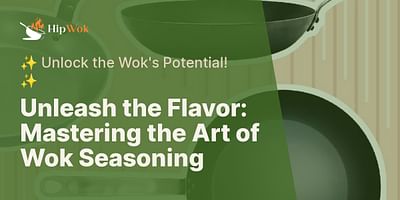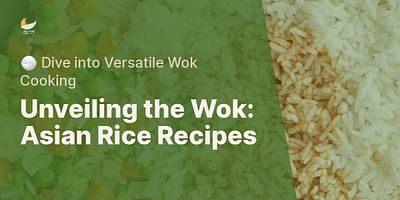Eladio Stark is a seasoned professional chef, renowned for his work in various Michelin-starred establishments. His unique take on traditional Asian cuisine, particularly his creative use of wok cooking, has made a mark in the culinary world.
Dear reader,
Using a nonstick wok can be a game-changer in your kitchen. It allows you to cook with less oil, prevents food from sticking, and makes cleanup a breeze. However, it's important to know how to use and care for your nonstick wok properly to ensure its longevity. In this guide, I'll share some valuable tips on how to use a nonstick wok without damaging it.
1. Choose the right utensils: When using a nonstick wok, it's crucial to use utensils that won't scratch or damage the nonstick coating. Opt for wooden, silicone, or plastic utensils to protect the surface. Avoid using metal utensils, as they can easily scratch the coating and reduce its effectiveness.
2. Use gentle heat: Nonstick woks are designed to distribute heat evenly, so you don't need to crank up the heat to high levels. Instead, use medium to low heat settings to prevent the nonstick coating from deteriorating. High heat can cause the coating to break down over time, reducing its nonstick properties.
3. Avoid using cooking sprays: While cooking sprays are convenient, they can leave a residue on your nonstick wok that is difficult to remove. Over time, this residue can build up and affect the nonstick coating. Instead, use a small amount of oil or butter to coat the surface of the wok before cooking.
4. Preheat the wok: Before adding any ingredients, preheat your nonstick wok on medium heat for a few minutes. This ensures that the wok is evenly heated and helps prevent food from sticking. You can test if the wok is hot enough by sprinkling a few drops of water on the surface – if they sizzle and evaporate quickly, it's ready to use.
5. Avoid using abrasive cleaners: When it comes to cleaning your nonstick wok, gentle is the way to go. Avoid using abrasive cleaners, scouring pads, or steel wool, as they can scratch the nonstick coating. Instead, use a soft sponge or cloth with mild dish soap to clean the wok. If there are stubborn food particles, soak the wok in warm, soapy water before cleaning.
6. Store it properly: To protect the nonstick coating, avoid stacking heavy pots or pans on top of your nonstick wok. Instead, store it in a cool, dry place with a soft cloth or paper towel placed inside to prevent any potential scratches.
Now that you know how to use a nonstick wok without damaging it, it's time to put it to good use! Nonstick woks are perfect for creating delicious Asian noodle dishes. From stir-fried noodles to noodle soups, the possibilities are endless. Check out our collection of Asian noodle recipes on Hip Wok for some inspiration.
Happy wok cooking!
Chef Bao Bao















